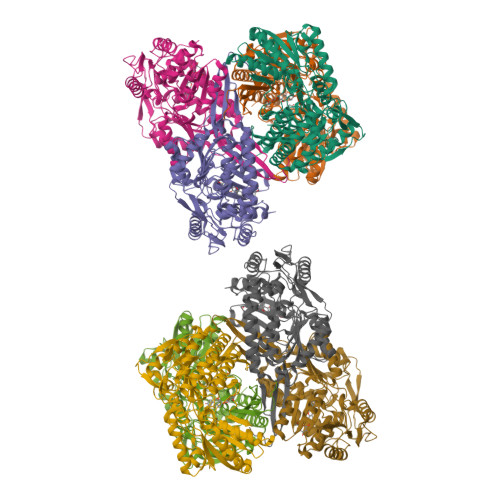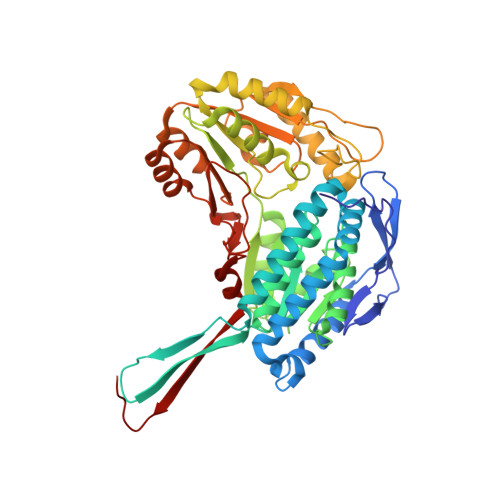Structure of Daidzin, a Naturally Occurring Anti-Alcohol-Addiction Agent, in Complex with Human Mitochondrial Aldehyde Dehydrogenase.
Lowe, E.D., Gao, G.Y., Johnson, L.N., Keung, W.M.(2008) J Med Chem 51: 4482
- PubMed: 18613661
- DOI: https://doi.org/10.1021/jm800488j
- Primary Citation of Related Structures:
2VLE - PubMed Abstract:
The ALDH2*2 gene encoding the inactive variant form of mitochondrial aldehyde dehydrogenase (ALDH2) protects nearly all carriers of this gene from alcoholism. Inhibition of ALDH2 has hence become a possible strategy to treat alcoholism. The natural product 7-O-glucosyl-4'-hydroxyisoflavone (daidzin), isolated from the kudzu vine ( Peruraria lobata), is a specific inhibitor of ALDH2 and suppresses ethanol consumption. Daidzin is the active principle in a herbal remedy for "alcohol addiction" and provides a lead for the design of improved ALDH2. The structure of daidzin/ALDH2 in complex at 2.4 A resolution shows the isoflavone moiety of daidzin binding close to the aldehyde substrate-binding site in a hydrophobic cleft and the glucosyl function binding to a hydrophobic patch immediately outside the isoflavone-binding pocket. These observations provide an explanation for both the specificity and affinity of daidzin (IC50 =80 nM) and the affinity of analogues with different substituents at the glucosyl position.
Organizational Affiliation:
Laboratory of Molecular Biophysics, University of Oxford, Rex Richards Building, Oxford OX1 3QU, UK. edl@biop.ox.ac.uk




















